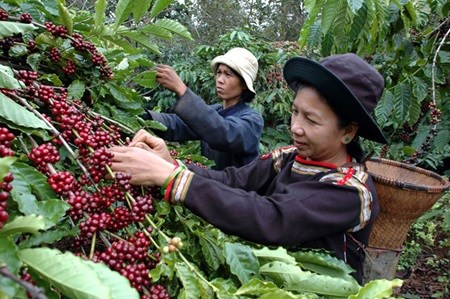Technology boosts coffee sector growth
Applying advanced technology has helped Viet Nam’s coffee sector develop sustainably, making the country the world’s second largest coffee producer, following Russia, and the top Robusta coffee exporter.
 |
| Farmers in Cu Ebur commune, Buon Ma Thuat city, harvest coffee beans (Photo: VNS/VNA) |
The total coffee crop area is estimated at 641,700 hectares, 90 percent of which are in the Central Highlands region.
Last year, the country shipped more than 1.6 million tonnes of coffee beans abroad for 3.4 billion USD. It is also among the countries with the highest coffee productivity of 2.3-2.5 tonnes of beans every hectare, currently three times higher than the global average.
To achieve these results, the Central Highlands Agriculture and Forestry Science Institute (CASI) have guided farmers to apply technological advances in farming and production.
CASI Director Le Ngoc Bau said over the past decade, the institute has focused its resources on researching key cultivation methods for seedling production, growing techniques and low-yield tree improvement.
The institute successfully created 13 Robusta varieties and three Arabica varieties by cross-breeding.
The new Robusta varieties generate about 4.5-7 tonnes of beans per hectare every crop, 30 percent more productive than traditional varieties and with bigger beans (17-23 grams every 100 beans). Most importantly, they are capable of resisting leaf rust (Hemileia vastatrix), a disease that can cause serious damage to coffee trees.
The varieties have been provided to local farmers to replace old trees, the director added.
CASI has also developed and instructed the use of effective watering and fertilising methods, farming techniques and harvesting and processing technologies to farmers.
In the years ahead, his institute will continue developing high-yield and high-quality varieties and more effective growing techniques while conducting in-depth studies on coffee diseases and pests to help Viet Nam’s coffee sector develop sustainably, Bau noted.
He also stressed the importance of connecting single households, producers and businesses to increase the competitiveness of Vietnamese coffee products in international markets.
(Source: VNA)